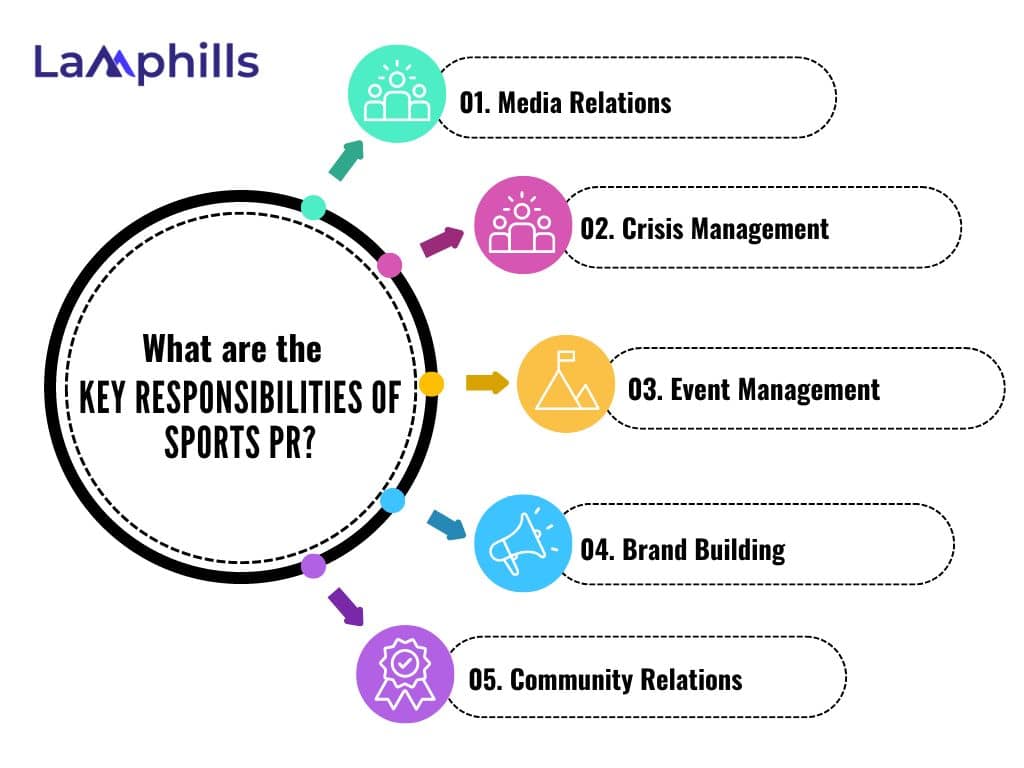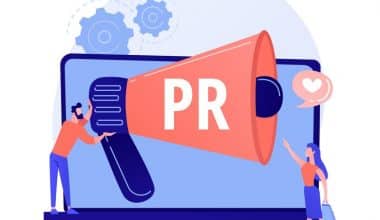Whether it’s the Olympics, World Cup, the Champions League, the NBA, or La Liga, we look forward to the publicity that announces the beginning or end of these activities. That’s the job of sports PR. Sports PR is a dynamic and fast-paced field that requires a deep understanding of the sports industry and public relations strategies. Professionals in this field work to enhance the public image, manage communication, and foster positive relationships between sports entities and their audiences. It is essential for building a strong public image, engaging fans, and achieving the strategic objectives of sports organizations and athletes. It’s a means of earning from your passion. Yes, passion, because without passion and love, you won’t have a thriving career in this field.
If you’re passionate about sports and intend to pursue a career in this field, I bring to you everything you should know about sports PR, including how much they earn and how to launch a successful career.
Key Points
- Sports PR (public relations) professionals manage the public image and communication efforts of athletes, sports teams, organizations, and events.
- Some of the skills you’ll need to succeed in this field include excellent written and verbal communication, relational skills, crisis management skills, creativity, and organizational skills.
- It’s a dynamic and fast-paced field that requires a deep understanding of both the sports industry and public relations strategies.
- The daily tasks of this professional PR include media monitoring, pitching stories, briefing documents, reporting, and so on.
- Sports PR in the United States earns about $83,626 on average annually. According to ZipRecruiter
Understanding Sports PR
Understanding sports PR involves recognizing its role in shaping the public perception of athletes, teams, and sports organizations. Sports PR focuses on managing communications and relationships with various stakeholders, including fans, media, sponsors, and the community. Spots PR manages the public image and the communication efforts of athletes, sports teams, organizations, and events. You can also call them the hype man of sports events because they promote not just the sport, but also the athletes, the club, and the entire team.
What are the Key Responsibilities of Sports PR?

The following are some of the key responsibilities of sports PR:
#1. Media Relations
Media relations include press releases, media coordination, and media kits. These go beyond managing clients’ social media handles. It involves press releases and media coordination. Press releases cover writing, distributing, and announcing news. Generally, this includes game results, player signings, events, or other significant updates.
Media coordination involves conducting interviews, press conferences, and media days. It also prepares athletes and coaches for interactions with the press and ensures they are available for media appearances.
#2. Crisis Management
Another key responsibility that you must uphold as a sports PR professional is damage control. You must be able to handle negative publicity or crises involving athletes, teams, or events. This means you must learn how to develop strategies to mitigate the impact of adverse events and manage the flow of information. You may also have to draft official statements and responses to media inquiries during crises.
#3. Event Management
Sports PR also promotes sports events, games, and other activities through various media channels. This includes organizing press conferences, fan events, and other promotional activities.
#4. Brand Building
Brand building focuses on managing the public image of athletes, including personal branding and public appearances. It also extends to working with marketing teams to secure sponsorships and endorsements for athletes and teams.
#5. Community Relations
This focuses on building goodwill that will strengthen the relationship between the team/athlete and the community. You may also have to promote and manage the involvement of athletes and teams in charitable activities and events.
#6. Social Media Management
You may also have to create and manage content for your client’s social media platforms. This will engage fans, promote upcoming events, and build a positive online presence. This may extend to responding to fan inquiries and managing online interactions, depending on your client.
Daily Tasks
If you intend to start a career as a sports PR professional or simply desire to know what the day-to-day tasks of sports PR professionals entail? Check it out below:
- Media Monitoring: This includes keeping track of media coverage and public sentiment about the team, athletes, or events.
- Pitching Stories: This involves reaching out to journalists and media outlets to pitch stories and secure coverage.
- Briefing Documents: This involves preparing briefing documents for athletes and coaches before interviews or public appearances.
- Reporting: This involves compiling media coverage reports and analyzing the effectiveness of PR campaigns.
What Skills Do I Need to Become a Sport PR?
If you’re passionate about sports and would like to pursue a career in sports PR, then get ready to acquire the following skills:
- Communication: This is what your job entails: excellent communication. You must be an eloquent communicator, whether it’s written or verbal communication.
- Relationship Building: Your job as a sports PR focuses on building relationships. Therefore, you must know how to build and maintain relationships with media professionals and stakeholders.
- Crisis Management: The ability to handle crises and manage negative publicity effectively is also one of the hats you must put on.
- Creativity: If you’ll thrive in your career as a sports PR, you must be creative in developing engaging content and PR campaigns.
- Organizational Skills: Sooner or later, you’ll have to organize an event or be part of the team that’s organizing one. In that instance, having strong organizational and project management skills will help you handle multiple tasks and events simultaneously.
Examples of Sports PR Activities (Insights)
The following are some examples of sports PR activities:
- Launching a New Team or Player: If you’re a football fan, and wondering who your favorite club will sign or let go of in the new season, it’s the job of the sports PR. They are responsible for the announcement and media strategy for introducing a new team or player.
- Promoting Major Events: Here, sports PR coordinates the PR efforts for major events like championships, tournaments, or charity games.
- Managing a Scandal: Here, sports PR handles fallouts from a scandal involving an athlete or team, including media statements and public apologies.
How Much Does Sports PR Make?
As of this write-up, a sports PR in the United States earns about $83,626 on average annually. According to ZipRecruiter, that’s about $40.20 per hour, $1,608 per week, and approximately $6,968 monthly.
Okay, let’s face the truth: “on average” simply means it can be higher or lower than the stated amount depending on several factors. For instance, the ZipRecruiter report as of the time of this write-up claims a sports PR salary can be as high as $134,000 and as low as $34,500 annually. The report further states that the salaries of most sports PR professionals in the United States range from $65,000 (25th percentile) to $97,500 (75th percentile), with top earners (90th percentile) making $122,500 annually.
The disparity in the total amount you’ll earn as a sports PR depends on factors such as years of experience, location, the team you represent, and so on. However, it means there’s room for advancement and improvement in this career field.
How to Get into Sports PR

Getting into sports PR can be a rewarding career path, however, two things must be in place if you’ll have a thriving career. First, you must be passionate about sports, and secondly, you must be an eloquent communicator, that is, skilled in communication. Once these two are in place, the steps below will help you get into and grow your career in sports PR.
#1. Education
If you’re a good fan of books, you’ll note that several successful writers, like Brain Tracy, possibly had a hard time pursuing their careers. Initially, all they had to contend with was their passion and the burning desire to become more. Today, you must add quality education to passion to chase certain careers, and a career in sports PR is no different.
In addition to your passion, obtain a bachelor’s degree in public relations, communications, journalism, marketing, or a related field. Some universities offer specialized courses in sports management or sports communication. You can also take courses that cover media relations, social media strategies, writing, and crisis communication. If available, enroll in sports-specific PR courses.
#2. Build Relevant Skills
In addition to being passionate about sports and having excellent communication skills, you must develop strong writing, speaking, and interpersonal communication skills. Secondly, you must learn how to manage relationships with the media, pitch stories, and write press releases. Gaining expertise in social media management, content creation, and digital marketing will also be an added benefit. Another important skill that you may need in the course of your career is to understand the basics of organizing and managing events. As a sports PR professional, you may have to be part of a team that’s involved in coordinating press conferences and events.
#3. Gain Experience
The best way to gain experience is to apply for internships with sports teams, sports agencies, or PR firms that have sports clients. Internships provide hands-on experience and networking opportunities. You can also volunteer at local sports events, clubs, or sports organizations to gain practical experience and make industry connections. Another way of gaining experience is to join or start a sports-related club or organization on campus. This will help you learn about promoting and managing sports activities.
#4. Network
The saying that network equals net worth can’t be overemphasized. Building a strong, solid network is another great way to advance your career. You can attend sports industry conferences, PR workshops, and networking events. You can also join organizations like the Public Relations Society of America (PRSA) or the International Aside from the above, you can look for sports-specific groups like the National Sports Marketing Network (NSMN).
Lastly, never underestimate social media platforms. Follow and engage with sports PR professionals on LinkedIn and Twitter to stay updated on industry trends and job openings.
#5. Build a Portfolio
To build a portfolio, you can create a professional website or online portfolio showcasing your work and experience. You can also compile press releases, media pitches, and your published articles or blog posts. Lamphills also advises documenting any PR campaigns or projects you’ve worked on, highlighting your role and the results achieved. These, put together, will help you build a compelling portfolio.
#6. Seek Entry-Level Positions
If you’re just starting out, look for entry-level positions such as PR assistant, media relations coordinator, or social media manager with sports teams, leagues, agencies, or athletic departments. You can also use job search sites like Indeed, and LinkedIn, and specialized sports job boards such as TeamWork Online and WorkInSports. Lastly, be open to various roles within the sports industry to gain experience and work your way up to a PR-specific position.
#7. Stay Updated and Continue Learning
Always stay current with trends in sports and PR by reading industry publications, blogs, and news. You can also consider further certifications or courses in PR, digital marketing, or sports management to enhance your skills. If you’re aiming for higher positions, consider a master’s degree in sports management, sports communication, or a related field. Certifications in digital marketing, social media management, or advanced PR can also be beneficial.
Lamphills Checklist to Becoming a Successful Sports PR
Lamphills Checklist to Becoming a Successful Sports PR
What Does Sports PR Do?
Sports PR (Public Relations) professionals manage the public image and communication efforts of athletes, sports teams, organizations, and events. Sports PR is a dynamic and fast-paced field that requires a deep understanding of both the sports industry and public relations strategies. Professionals in this field work to enhance the public image, manage communication, and foster positive relationships between sports entities and their audiences.
What is Sports Public Relations Defined As?
Sport Public Relations (Sport PR) is the strategic communication process that builds and maintains mutually beneficial relationships between sports organizations, athletes, and their various publics. This field involves managing the public image and reputation of sports entities through media relations, community engagement, crisis management, and promotional activities.
What is a Successful PR Program in Sports?
A successful sports PR program is a well-coordinated effort that aligns with the overarching goals of the sports entity. It begins with an objective and involves strategic planning, targeted messaging, effective media relations, an engaging digital presence, active community engagement, and a robust crisis management plan. In the course of these, the objectives are measured and refined to build strong, positive relationships with audiences and achieve lasting success.
Do Athletes have PR Managers?
Sure, they do. An athlete PR manager is in charge of developing and managing an athlete’s public image. They oversee media relations and ensure the athlete’s actions are consistent with their ideal image.
Conclusion
Sports PR is a dynamic and fast-paced field that requires a deep understanding of the sports industry and public relations strategies. Professionals in this field work to enhance the public image, manage communication, and foster positive relationships between sports entities and their audiences. It is essential for building a strong public image, engaging fans, and achieving the strategic objectives of sports organizations and athletes.
Related Articles
- THE TOP 2024 GAME JOURNALISTS YOU SHOULD KNOW (UPDATED)
- Sports Press Release: Best 2024 Practices & How to Write Guide
- The Top PR Scandals in History: How to Handle One Effectively!!






